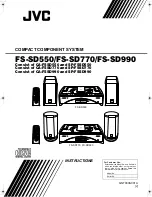
T E CH N I C A L S U P P O RT:
1.800.283.5936 (USA) OR 1.801.975.3760
I N STA L L AT I O N •
BEFORE YOU INSTALL
13
Reverberation. Reverberation is the persistence of sound due to
repeated reflections from walls, ceiling, floor, furniture and occupants in
a room. Reverberation dissipates over a fixed period of time deter-
mined by the room’s environment.
Acoustic Echo. Acoustic echo is the sudden return of sound (rather
than a smooth decay) caused primarily by a delay in the network or
environment. It occurs before or after a signal leaves a speaker and
enters a microphone for the return transmission, entering the originat-
ing site later. In other words, listeners at the remote location hear their
own voices echoed back to them through the speakers and micro-
phones at the opposite location.
Ambient Noise. Ambient noise, also known as room noise, is unwanted
background noise picked up by the conference-room microphones. Air
conditioning, heating fans, and noises created outside the room but still
audible inside the room are all examples of ambient noise.
Acoustic Room Treatment
Conference-room treatment is recommended to improve audio quality.
Rooms that have large areas of windows, white boards, hard floors, etc.
are acoustically "live." These areas increase the amount of audio rever-
beration.
You can improve room acoustics by installing acoustic panels, drapes
and other wall fabrics. Another way to improve overall room acoustics
is to keep ambient noise to a minimum.
Figure 4. Room acoustics diagram
















































